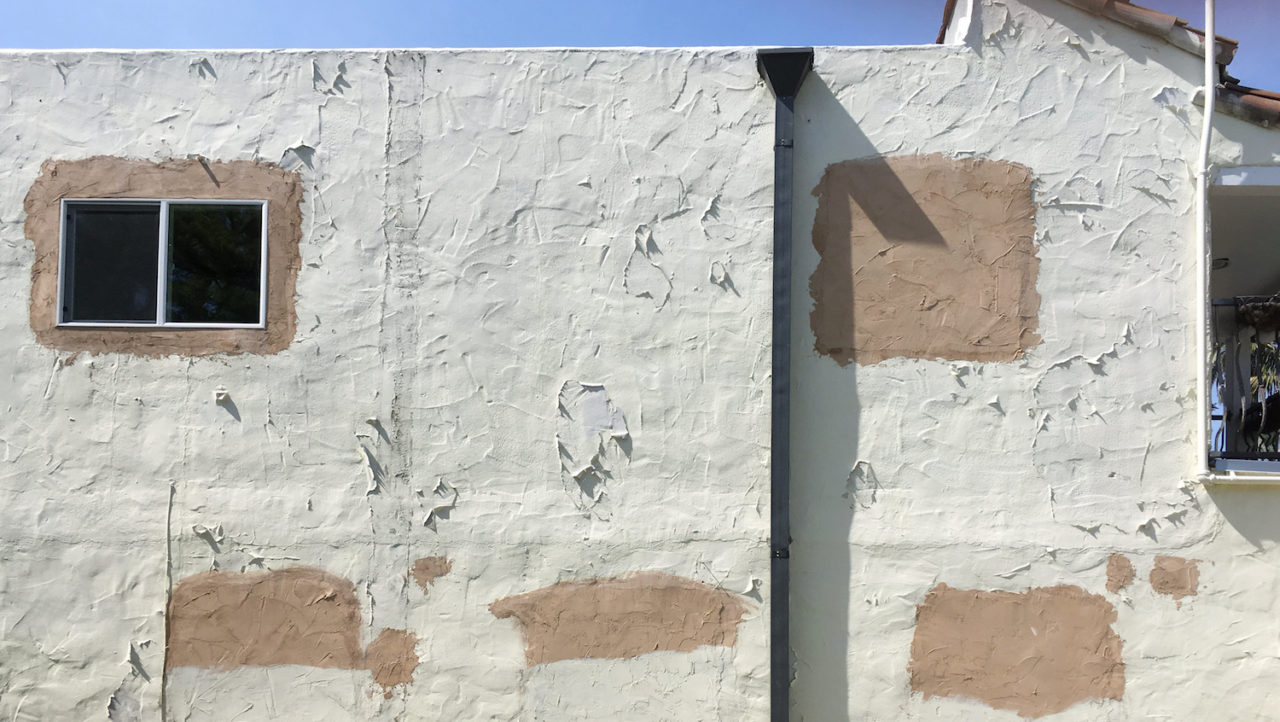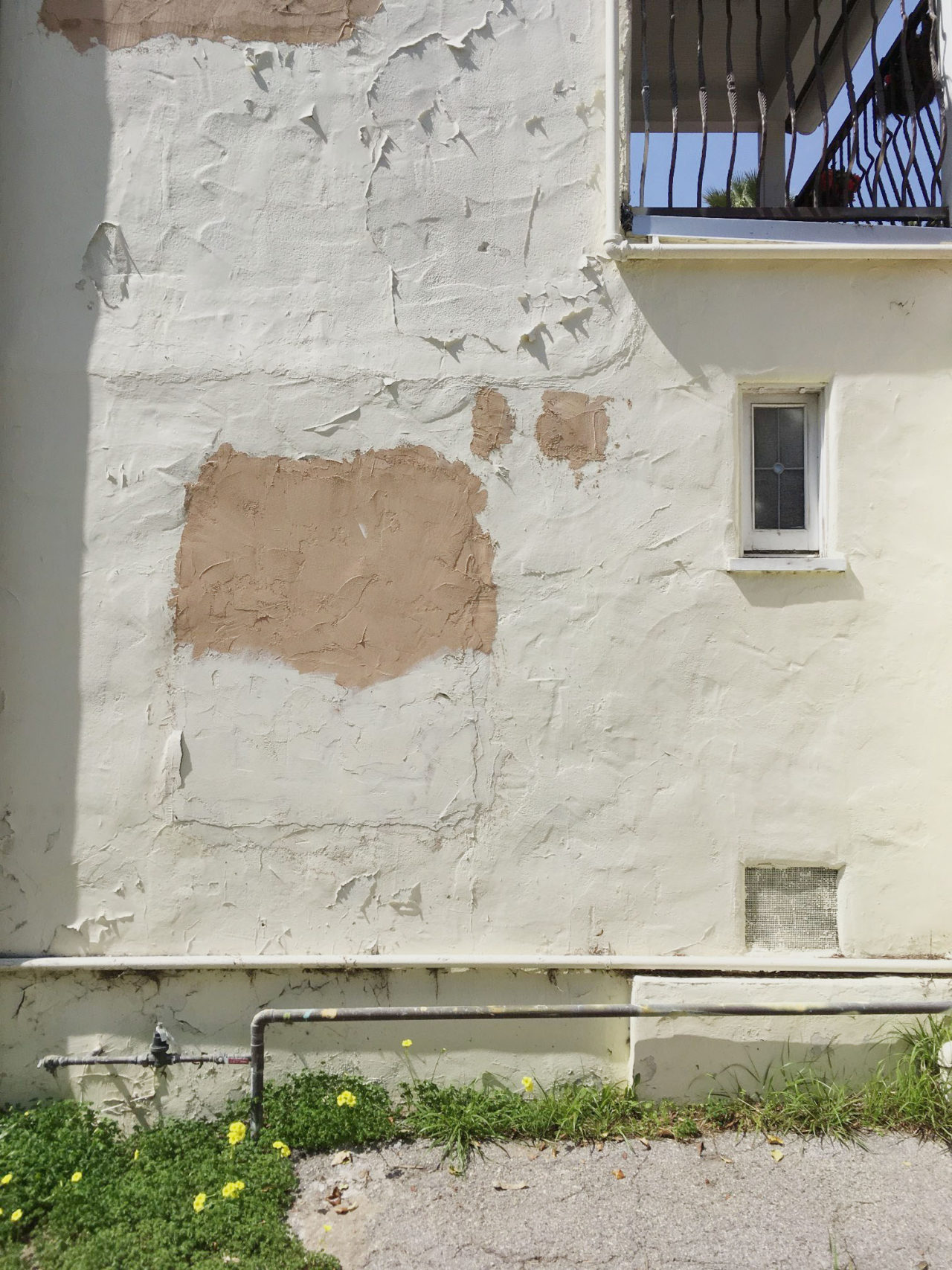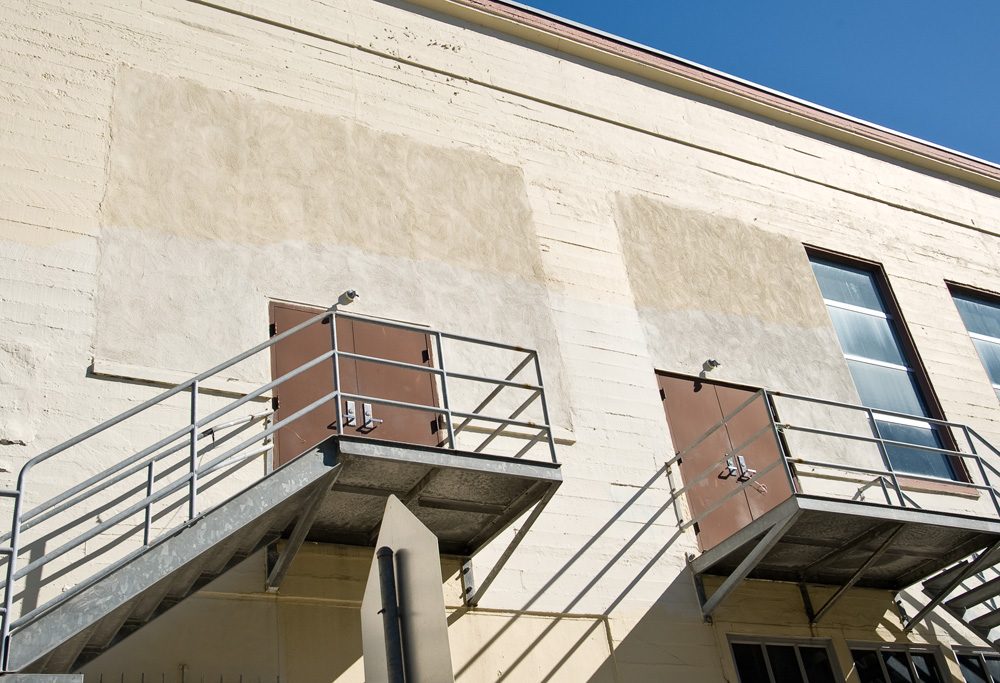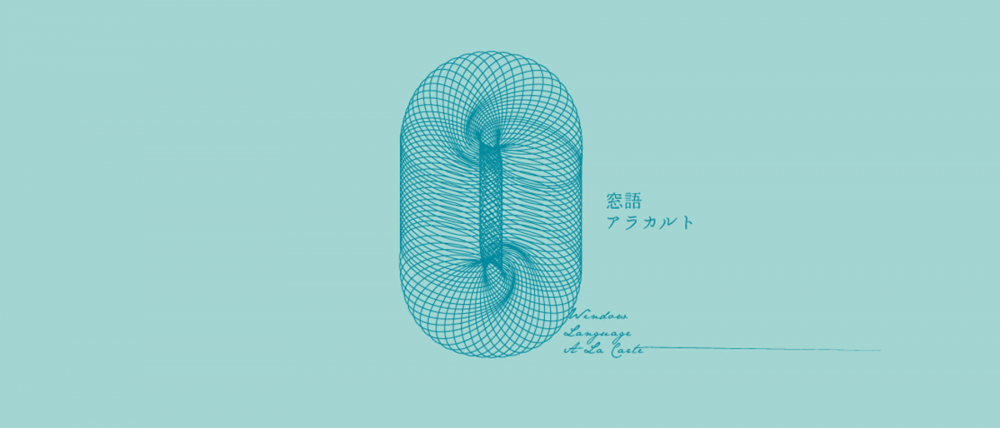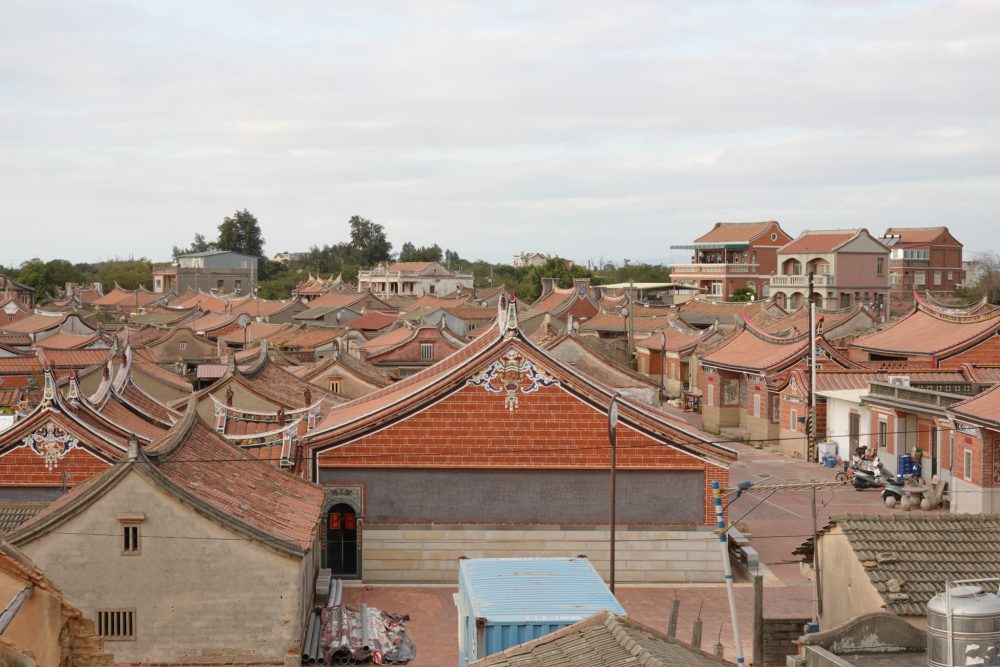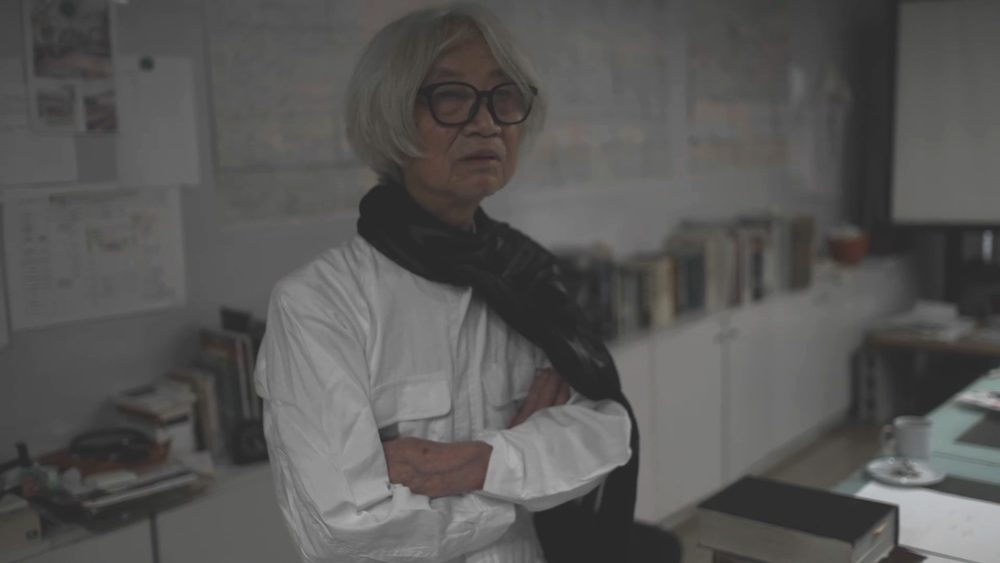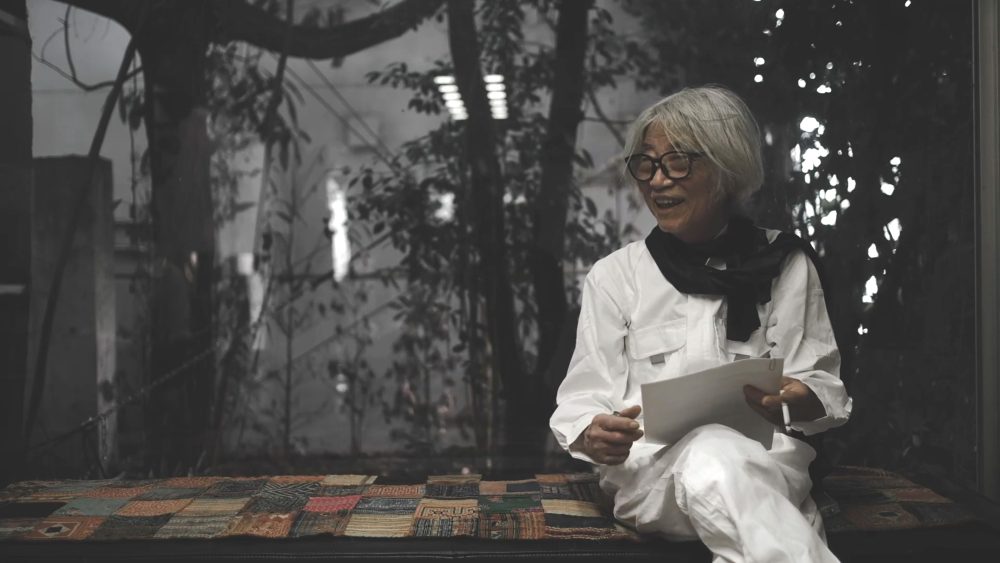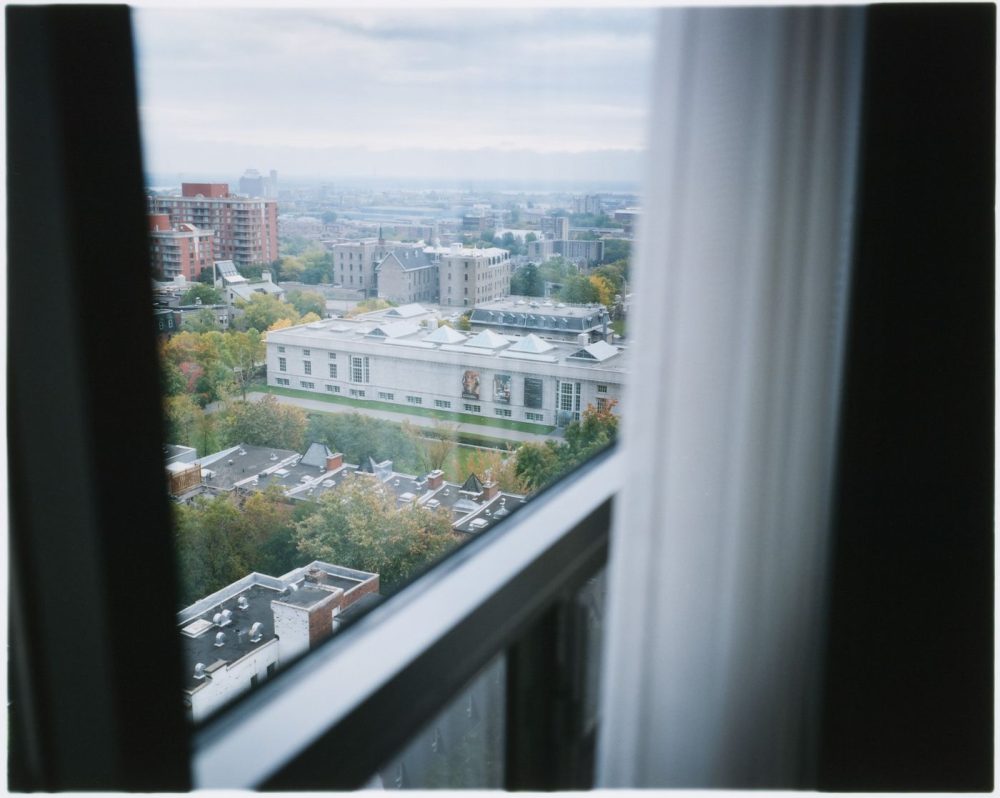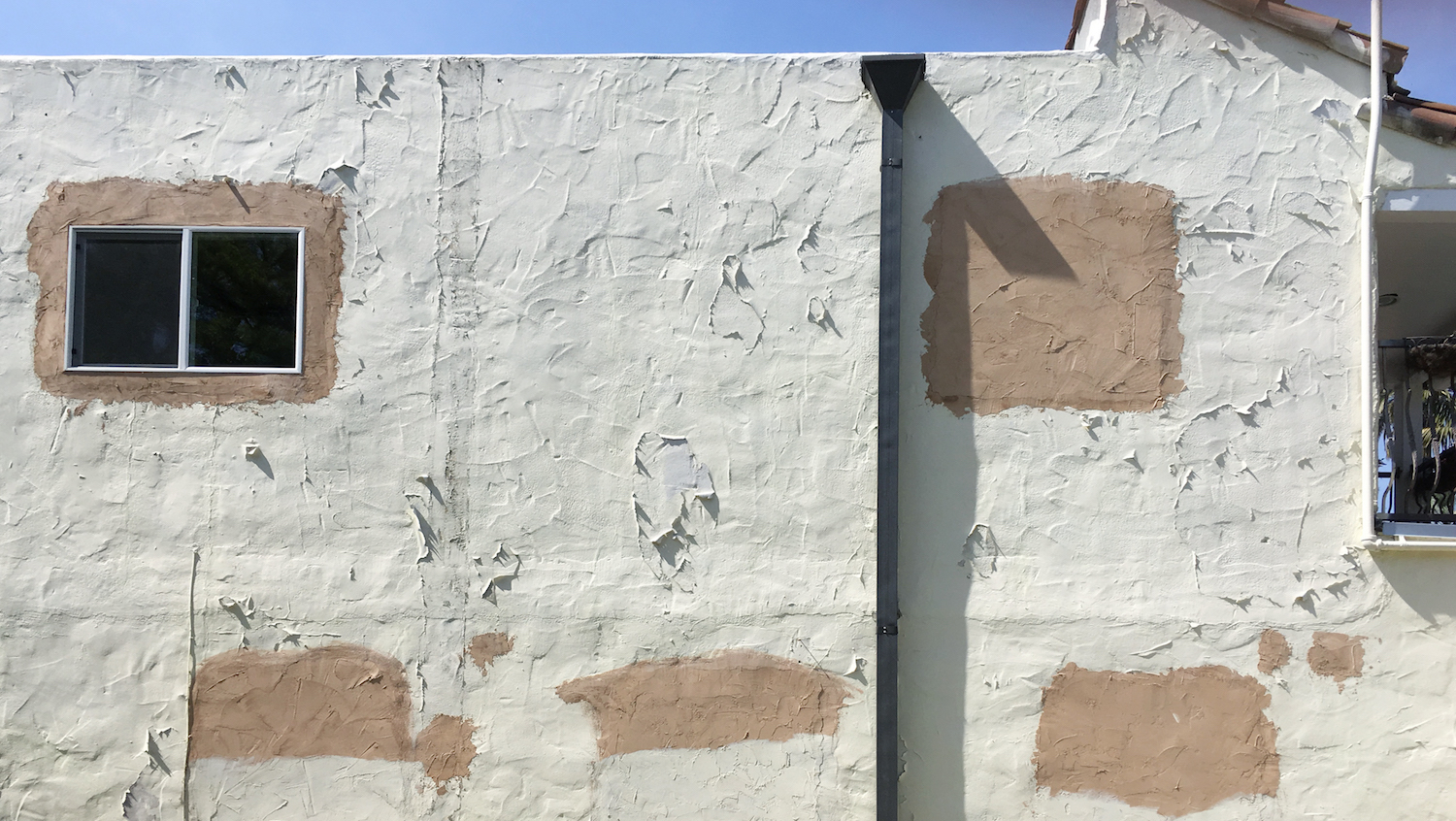
Series Fenestration Observations
Adobe Windows
23 Jan 2019
- Keywords
- Literature
Fenestration Observations is a series of window disquisitions by Matthew Fargo. In it, the translator of Genpei Akasegawa’s Hyperart Thomasson probes the city for hidden and forgotten features of the fenestral landscape. Join him on his hunt for windows that, seen in a particular light—from a particular and tangential vantage—become accidental works of art.
Hollywood alleyway.
I know, the words are a little incongruous, like a cafe called New York Smoothie, but the fact is that Hollywood is capillaried with a charming little system of alleyways. Meanwhile Manhattan has no alleyways and the smoothies are divine, so just let these words into your life: Hollywood alleyway.
This was taken in just such an alleyway in early spring, 2018. It’s a classic piece of southern Californian architecture: a Spanish Colonial Revival. The style is loosely based on earlier Mission and Santa Fe styles, which is to say that they are inspired by the architectural genius of the Pueblo peoples—namely, the exterior is finished with stucco, evoking adobe, the grandfather of Southwest architecture. Even as the Spanish colonists massacred the Puebloans, and then the Americans ousted the Spanish, and then the celebrities descended upon Hollywood in droves—through all the fickle shifts of history, stucco alone has posed a lasting thesis. This is the “marble of the suburbs,” the “dermis of Los Angeles,” cool against the punishing sun and indifferent to earthquakes.
But we’re not here to talk about adobe and stucco. We’re standing in this alleyway, today, for the windows.
The first thing we tend to speculate about is the why—what caused these beautiful south-facing windows to fall into disfavor? Could it be the sun, ever heating with the Earth’s belabored atmosphere? Or is it an issue of privacy for some Hollywood starlet? Might it be the noise of alleyway traffic? Whichever it is, the whole question of causality isn’t nearly as interesting as the question of how, exactly, this happened.
I’m talking, of course, about the colors.
How does this happen? Sure, there’s something vaguely appetizing about the milk-chocolate and cream palette, here, and the frosting mouthfeel of the stucco only makes you want to maybe scoop a little finger off the side before you bring it out to the table, nobody’s going to notice—but how does something like this, you know, happen?
Well, I can start by telling you that stucco has more in common with guacamole than paint—that is: once you mix it, you gotta dip it. No keeping that overnight, buddy, so what probably happened here was that the contractor mixed up a bag of white stucco, applied it, and then found out that they only had brown stucco left. This much makes sense. Sloppy, but relatively logical.
So why the line? See how the white stucco all sort of ends right at the same altitude? If you were this sloppy contractor, would you fill in the bottom half of three separate windows, trying as hard as possible to split the remaining stucco into thirds so that they all aligned?
No, you wouldn’t. You are sloppy. You leave the lids off of all your bottles and tubes in the bathroom. Your phone is always at 10%. The floor is your hamper. When confronted with this problem you would fill in one entire window, and then slap the rest on wherever was convenient. And so whence this meticulous adherence to a uniform height?
I thought about this for a long time. Not just because I am bored (which I am) but because—well, I don’t know why, exactly, but for some reason I couldn’t stop thinking about it. Are you actually a finicky nitpicker, who has decided that using brown stucco above seven feet is akin to wearing white after Labor Day? Or are you the sloppy “git ʻer done” redneck that I’ve pegged you for?
I’m clearly no Sherlock Holmes, because it took me about three weeks of walking around and listening to podcasts before I understood the forensics of the situation, but I think I’ve nailed it, here, so hear me out, Watson:
The culprit, actually, is a ladder.
Yes! You are sloppy after all! Not only did you run out of white stucco, but you forgot to bring a ladder, as well! And you didn’t realize this until you had mixed your stucco and started plastering the first window and realized: “Oh.”
And so the seven-foot rule was arrived at like so much public policy: as the only remaining option. White stucco was applied to the extent that your arm could reach, and then you used your lunch break to go back to the shop for a ladder. It’s elementary, my dear Watson. Deductive reasoning.
But that’s not all! My investigation into this particular instance has produced another bombshell conclusion, which I now present to you as a parting bit of wisdom:
Don’t ever try and use an internet search engine to research “adobe windows.” Or maybe give it a try, because libraries, you will soon realize, are a national treasure.
Fenestration Observations
The title derives from “Street Observation,” a practice formalized by Genpei Akasegawa and affiliated artists in the 1970s. Beginning with a specific interest in the useless and defunct artifacts of our man-made environment, the genre soon spread to encompass a wide variety of observational fieldwork. Inspired by the observations of Japanese Modernologists like Kon Wajirō, “Street Observation” involves the meticulous examination and documentation of telephone poles, handbills, manhole covers, school uniforms, urban gardens, and other phenomenon that seem to exist outside the hyper-functionality of contemporary life.
Matthew Fargo
A Translator, designer, technologist, Fargo studied Japanese Literature at UC Berkeley and Interaction Design at NYUʼs ITP. The translator of Akasegawa Genpeiʼs Hyperart Thomasson, creator of the iOS App “Ekibo,” and a member of the design group NNNNY, Fargo prefers *not* to explore the intersection of literature and design, opting to pursue each in its own capacity.
